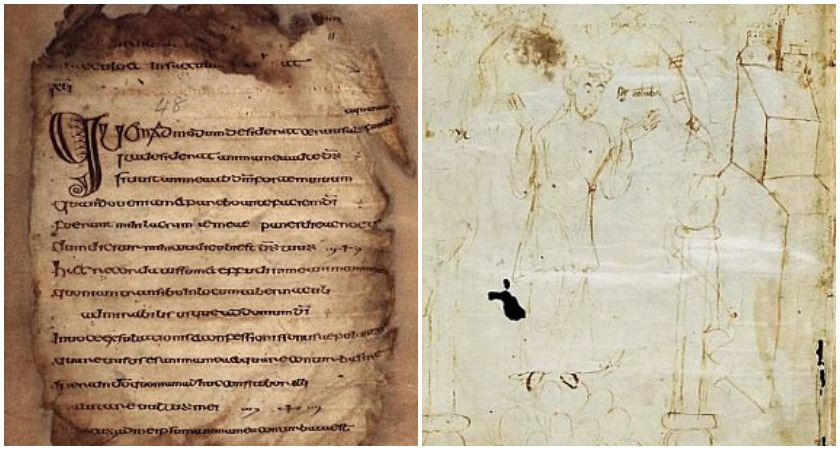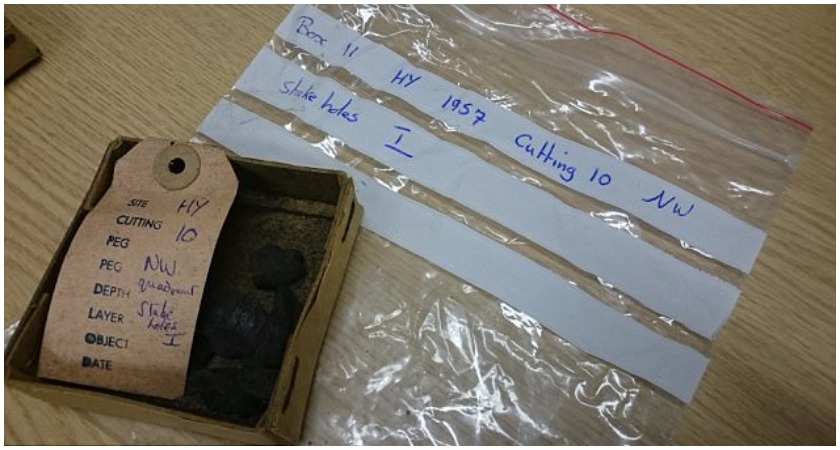A WOODEN hut on the Scottish island of Iona has finally been identified by archaeologists as the remains of St Columba's cell.
The Irish monk was exiled to Iona in 563 AD and was a key player in the evangelisation of both Scotland and Ireland.
Scientists have used radiocarbon dating to prove that wood unearthed on the island is from the exact period Columba lived there 1,500 years ago.
The charred remains of the hut were first uncovered 60 years ago, but it has taken until now for science to finally identify them.
The cell, known as a ‘scriptorium’, is where St Columba prayed, studied and spent the last days of his life.
It was initially discovered by archaeologist Professor Charles Thomas in 1957 and quickly excavated.
Although excavators believed at the time it was likely Columba’s cell, the lack of radio carbon dating technology meant such claims were dismissed as speculation.
 The Cathach manuscript (left) was written in the cell. Pictured right is the earliest image of St Columba (Picture: University of Glasgow)
The Cathach manuscript (left) was written in the cell. Pictured right is the earliest image of St Columba (Picture: University of Glasgow)However, Professor Thomas had the foresight to carefully store the samples at several universities – and even in a garage in Truro, Cornwall.
In 2012, he donated the samples to Historic Environment Scotland – who later shared them with the University of Glasgow.
The university's radio carbon dating finally confirms the cell dates to between 540 and 650. Columba – whose Irish name was Colm Cille – died in 597.
Professor Thomas Clancy, Celtic and Gaelic historian at the University of Glasgow, said: “The remains on top of Torr an Aba had been dismissed as from a much later date.
“Now we know they belonged to a structure which stood there in Columba's lifetime.
“More than that, the dates, and our new understanding of the turning of the site into a monument not long after its use, makes it pretty clear that this was St Columba's day or writing house.”
In The Life of Saint Columba, written a century after his death, Colm Cille was described as often writing in his cell on a rocky hillock, called Torr an Aba or 'the mound of the abbot'.
Archaeologists believe The Cathach, a manuscript of psalms reputed to be written by Columba himself, would have been written in the cell.
Sadly, Charles Thomas died last year and did not live to see his theory confirmed, but Dr Adrian Maldonado of the University of Glasgow says he has finally been vindicated.
“Thomas always believed he and his team had uncovered Columba's original wooden hut but they could never prove it because the technology wasn't there,” he said.
“So, for us, 60 years later, to be able to send the original samples off to the radiocarbon dating labs and have them come back showing, within the margin of error, as something which may have been built in the lifetime of St Columba, is very exciting.
“This is as close as any archaeologist has come to excavating a structure built during the time of St Columba and it is a great vindication of the archaeological instincts of Thomas and his team.”


